The MOEX Russia index
In this article, Nithisha CHALLA (ESSEC Business School, Grande Ecole Program – Master in Management, 2021-2023) presents the MOEX Russia index and details its characteristics.
The MOEX Russia index
The Moscow Exchange Russia Index (MOEX Russia Index) is market-capitalization-weighted index of the 50 biggest and most liquid companies listed on the Moscow Exchange. It was first presented in 1997 and serves as the benchmark index for the Russian stock market.
A wide range of sectors are covered by the MOEX Russia Index, including consumer goods, energy, finance, and telecommunications. By market capitalization, Gazprom, Sberbank, Lukoil, Novatek, and Tatneft were the top five index members as of September 2021.
The MOEX Russia Index is a market-capitalization-weighted index, which means that rather than using share price to determine a company’s weight in the index, it utilizes market capitalization. This enables it to depict the overall performance of the Russian equity market with greater accuracy.
Investors and asset managers frequently use the MOEX Russia Index as a benchmark to monitor the performance of the Russian equity market. ETFs and index funds are examples of financial products that are made to track the MOEX Russia Index.
The MOEX Russia Index has the ticker “IMOEX” in the financial sector.
Table 1 below gives the Top 10 stocks in the MOEX Russia index in terms of market capitalization as of January 31, 2023.
Table 1. Top 10 stocks in the MOEX Russia index.
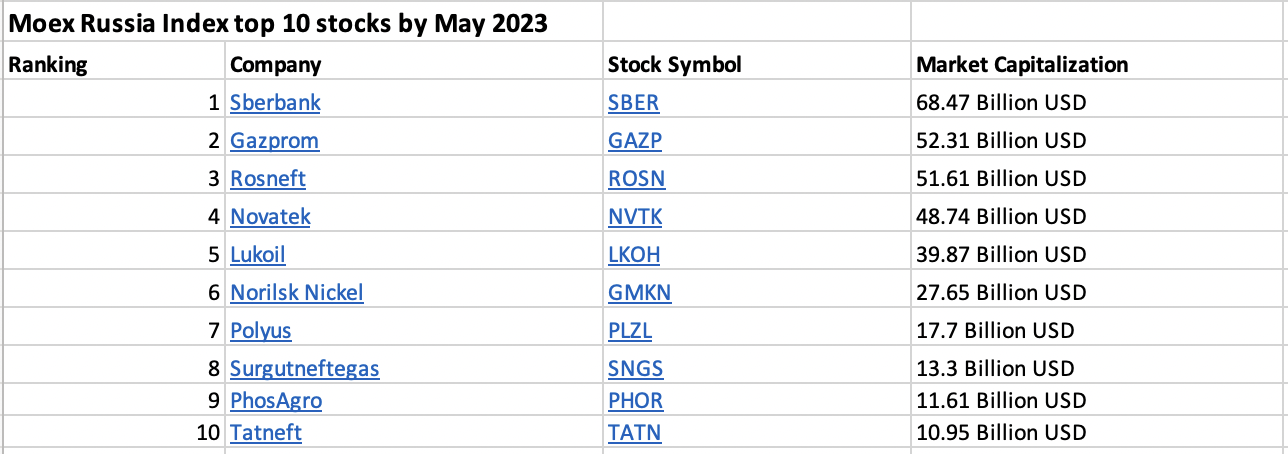
Source: computation by the author (data: Yahoo! Finance website).
Calculation of the MOEX Russia index value
As per the free-float methodology, which is used to calculate the MOEX Russia Index, each company’s weight in the index is determined by the percentage of its shares that are available for public trading rather than by its overall market capitalization. The goal of this methodology is to present a more accurate picture of the market value of each company.
The formula to compute the MOEX Russia is given by
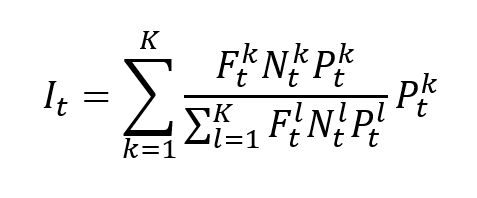
Where I is the index value, k a given asset, K the number of assets in the index, Pk the market price of asset k, Nk the number of issued shares for asset k, Fk the float factor of asset k, and t the time of calculation of the index.
In a float-adjusted market-capitalization-weighted index, the weight of asset k is given by formula can be rewritten as
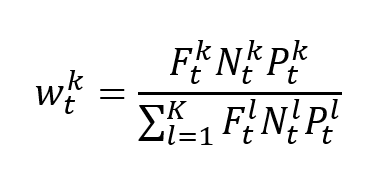
Use of the MOEX Russia index in asset management
For asset managers who make investments in the Russian equity market, the MOEX Russia index serves as a crucial benchmark. It is used as an exchange-traded fund (ETF) and Russian equity fund performance benchmark. The index can be used by investors to assess the performance of their portfolios and compare it to the performance of the complete market.
Benchmark for equity funds
Equity funds that invest in Russian companies use the MOEX Russia Index as a benchmark. The MOEX Russia index can also serve as the foundation for the investment products that track indices, like index funds and ETFs. These goods are made to follow the index’s performance and give buyers access to Russian equity market. Investors can gain broad market exposure through the purchase of these products without picking individual stocks.
Financial products around the MOEX Russia index
There are several financial products tracking the performance of the MOEX Russia Index, allowing investors to gain exposure to the Russian stock market.
- ETFs are investment funds traded on the stock exchanges, designed to track performance of an index. There are several ETFs that track the MOEX Russia Index, such as the Xtrackers Russia UCITS and the VanEck Vectors Russia
- Index funds are designed to track performance of an index. Index funds based on the MOEX Russia Index include the Sberbank Asset Management MOEX Russia Index Fund and the Raiffeisen Russia Equity Fund.
- Futures and options contracts based on the MOEX Russia Index provide investors with the ability to speculate on the future performance of the index. For example, the Moscow Exchange offers futures contracts based on the MOEX Russia Index.
- Certificates are investment products that allow investors to get exposure to the MOEX Russia Index. Société Générale offers a range of certificates linked to the MOEX Russia Index, such as the MOEX Russia Index Tracker Certificate.
Historical data for the MOEX Russia index
How to get the data?
The MOEX Russia index is the most common index used in finance, and historical data for the MOEX Russia index can be easily downloaded from the internet.
For example, you can download data for the MOEX Russia index from January 3, 1984 on Yahoo! Finance (the Yahoo! code for MOEX Russia index is IMOEX.ME).
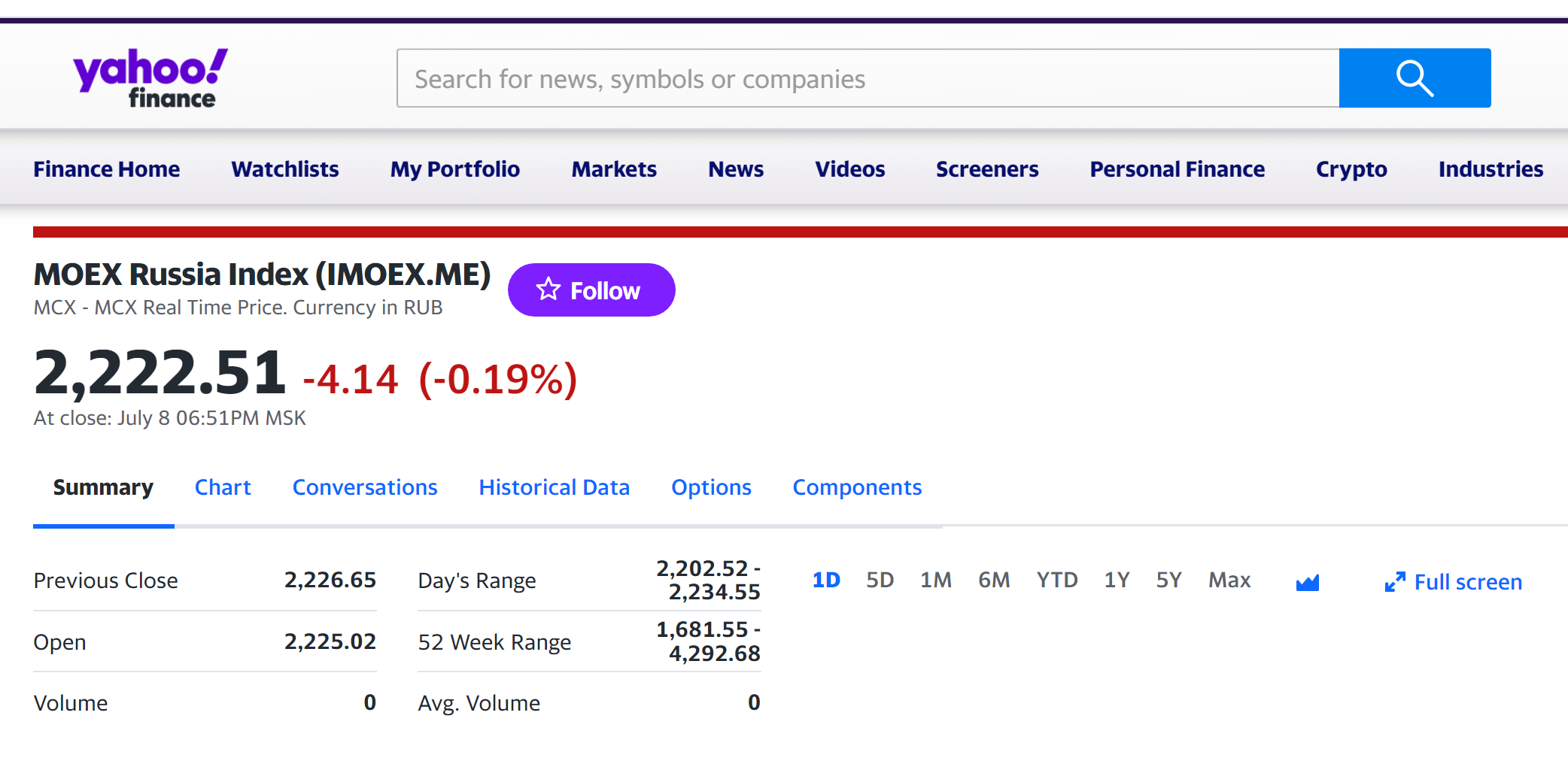
Source: Yahoo! Finance.
You can also download the same data from a Bloomberg terminal.
R program
The R program below written by Shengyu ZHENG allows you to download the data from Yahoo! Finance website and to compute summary statistics and risk measures about the MOEX Russia index.
Data file
The R program that you can download above allows you to download the data for the MOEX Russia index from the Yahoo! Finance website. The database starts on January 3, 1984. It also computes the returns (logarithmic returns) from closing prices.
Table 3 below represents the top of the data file for the MOEX Russia index downloaded from the Yahoo! Finance website with the R program.
Table 3. Top of the data file for the MOEX Russia index.
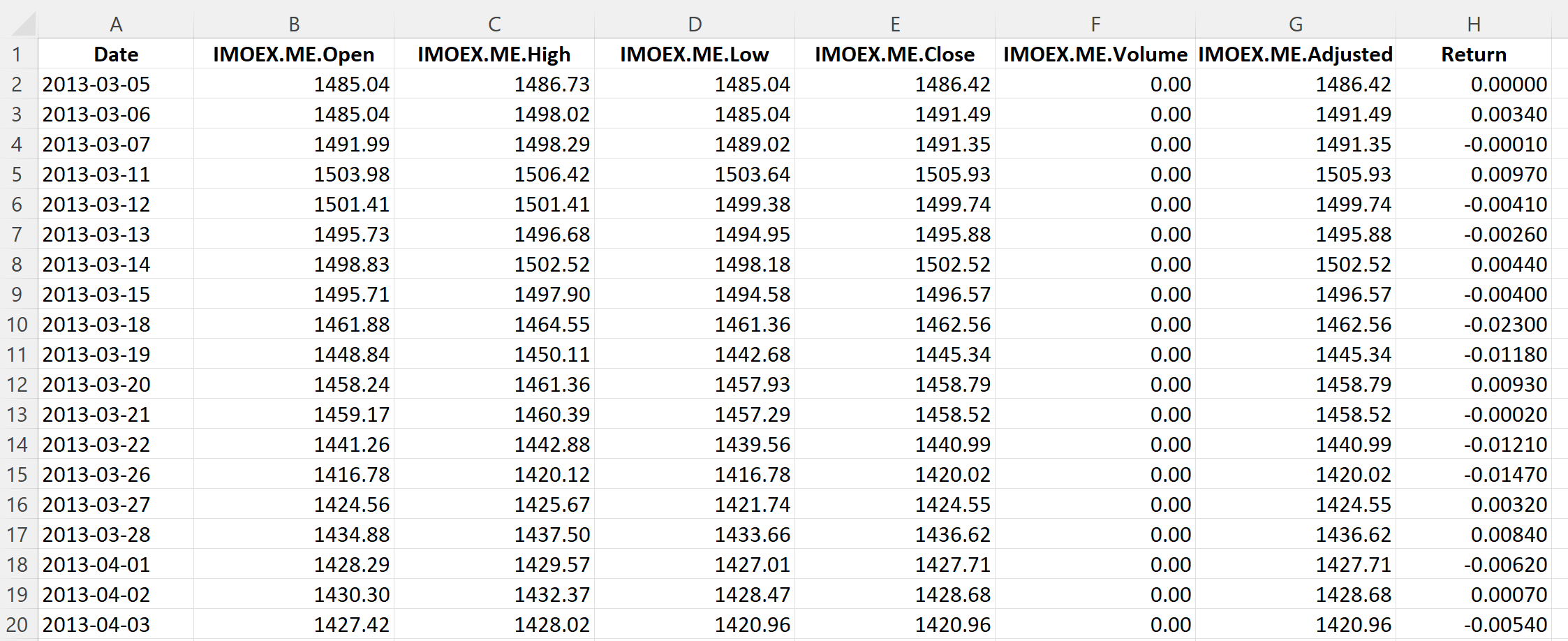
Source: computation by the author (data: Yahoo! Finance website).
Evolution of the MOEX Russia index
Figure 1 below gives the evolution of the MOEX Russia index from January 3, 1984 to December 30, 2022 on a daily basis.
Figure 1. Evolution of the MOEX Russia index.
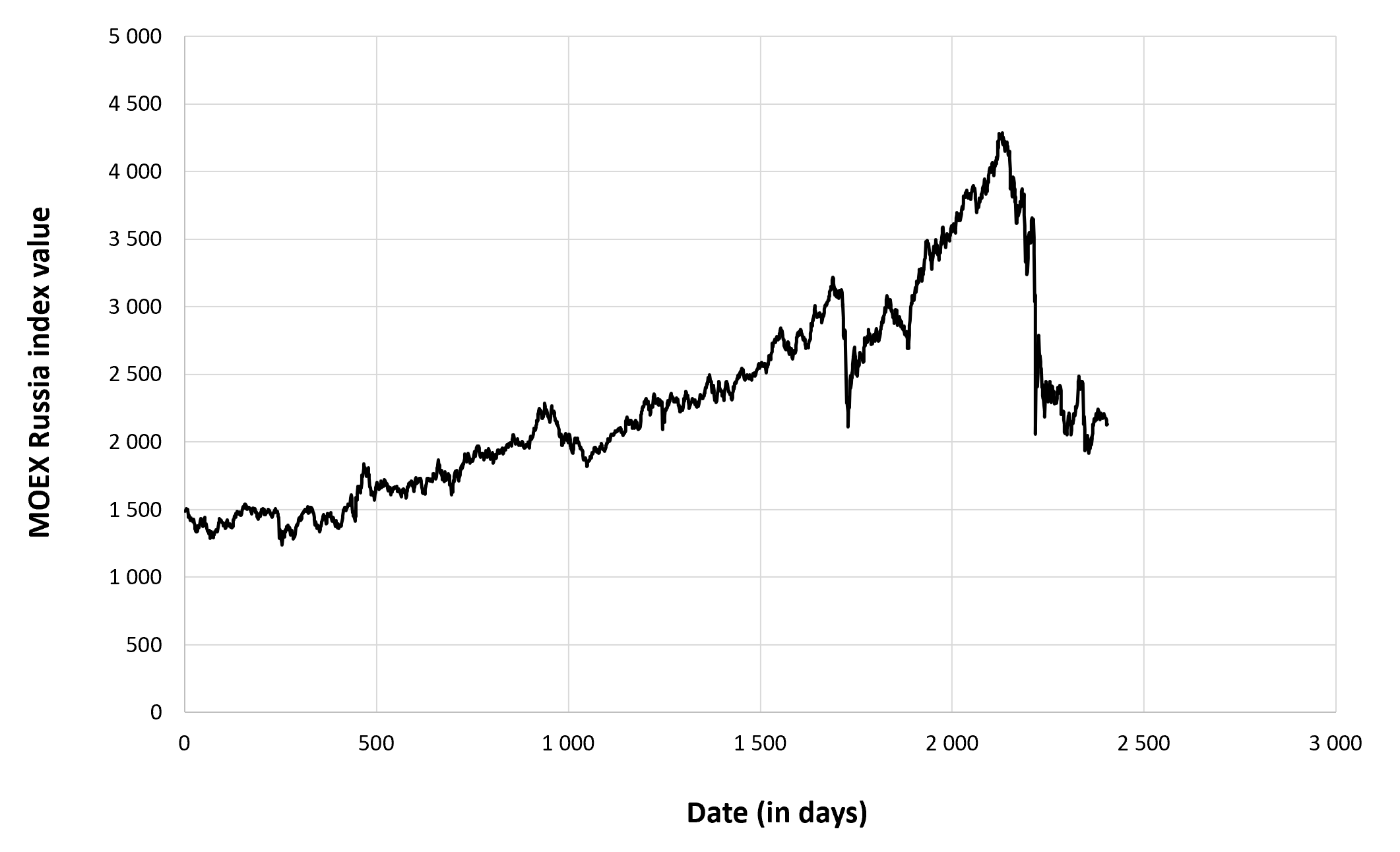
Source: computation by the author (data: Yahoo! Finance website).
Figure 2 below gives the evolution of the MOEX Russia index returns from January 3, 1984 to December 30, 2022 on a daily basis.
Figure 2. Evolution of the MOEX Russia index returns.
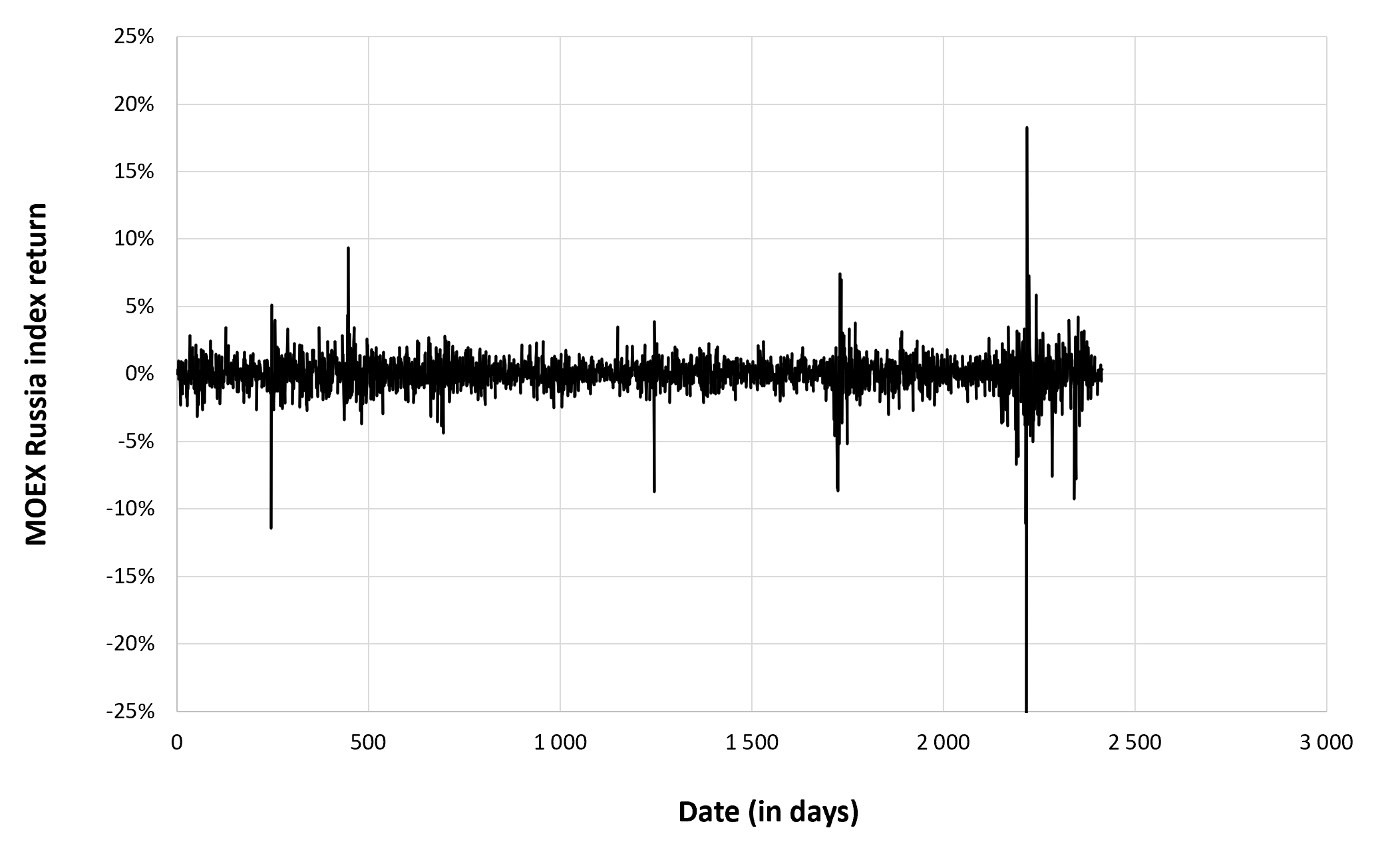
Source: computation by the author (data: Yahoo! Finance website).
Summary statistics for the MOEX Russia index
The R program that you can download above also allows you to compute summary statistics about the returns of the MOEX Russia index.
Table 4 below presents the following summary statistics estimated for the MOEX Russia index:
- The mean
- The standard deviation (the squared root of the variance)
- The skewness
- The kurtosis.
The mean, the standard deviation / variance, the skewness, and the kurtosis refer to the first, second, third and fourth moments of statistical distribution of returns respectively.
Table 4. Summary statistics for the MOEX Russia index.
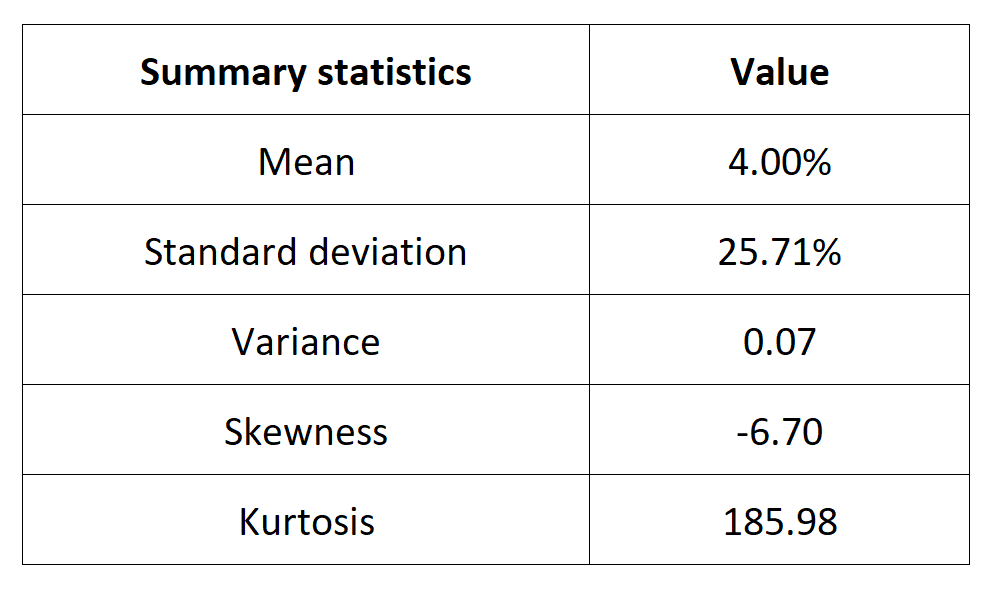
Source: computation by the author (data: Yahoo! Finance website).
Statistical distribution of the MOEX Russia index returns
Historical distribution
Figure 3 represents the historical distribution of the MOEX Russia index daily returns for the period from January 3, 1984 to December 30, 2022.
Figure 3. Historical distribution of the MOEX Russia index returns.
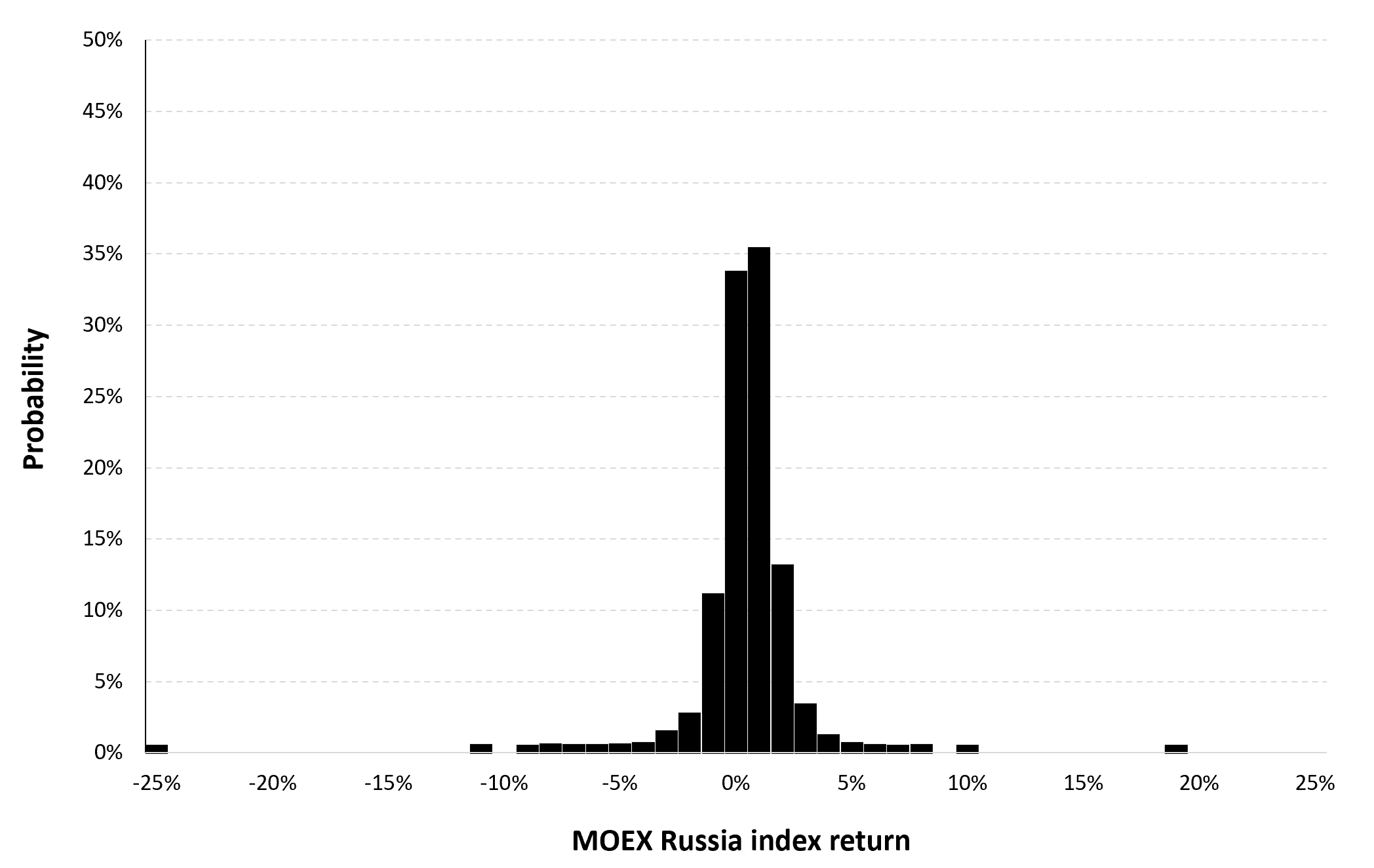
Source: computation by the author (data: Yahoo! Finance website).
Gaussian distribution
The Gaussian distribution (also called the normal distribution) is a parametric distribution with two parameters: the mean and the standard deviation of returns. We estimated these two parameters over the period from January 3, 1984 to December 30, 2022. The mean of daily returns is equal to 0.02% and the standard deviation of daily returns is equal to 1.37% (or equivalently 3.94% for the annual mean and 28.02% for the annual standard deviation as shown in Table 3 above).
Figure 4 below represents the Gaussian distribution of the MOEX Russia index daily returns with parameters estimated over the period from January 3, 1984 to December 30, 2022.
Figure 4. Gaussian distribution of the MOEX Russia index returns.
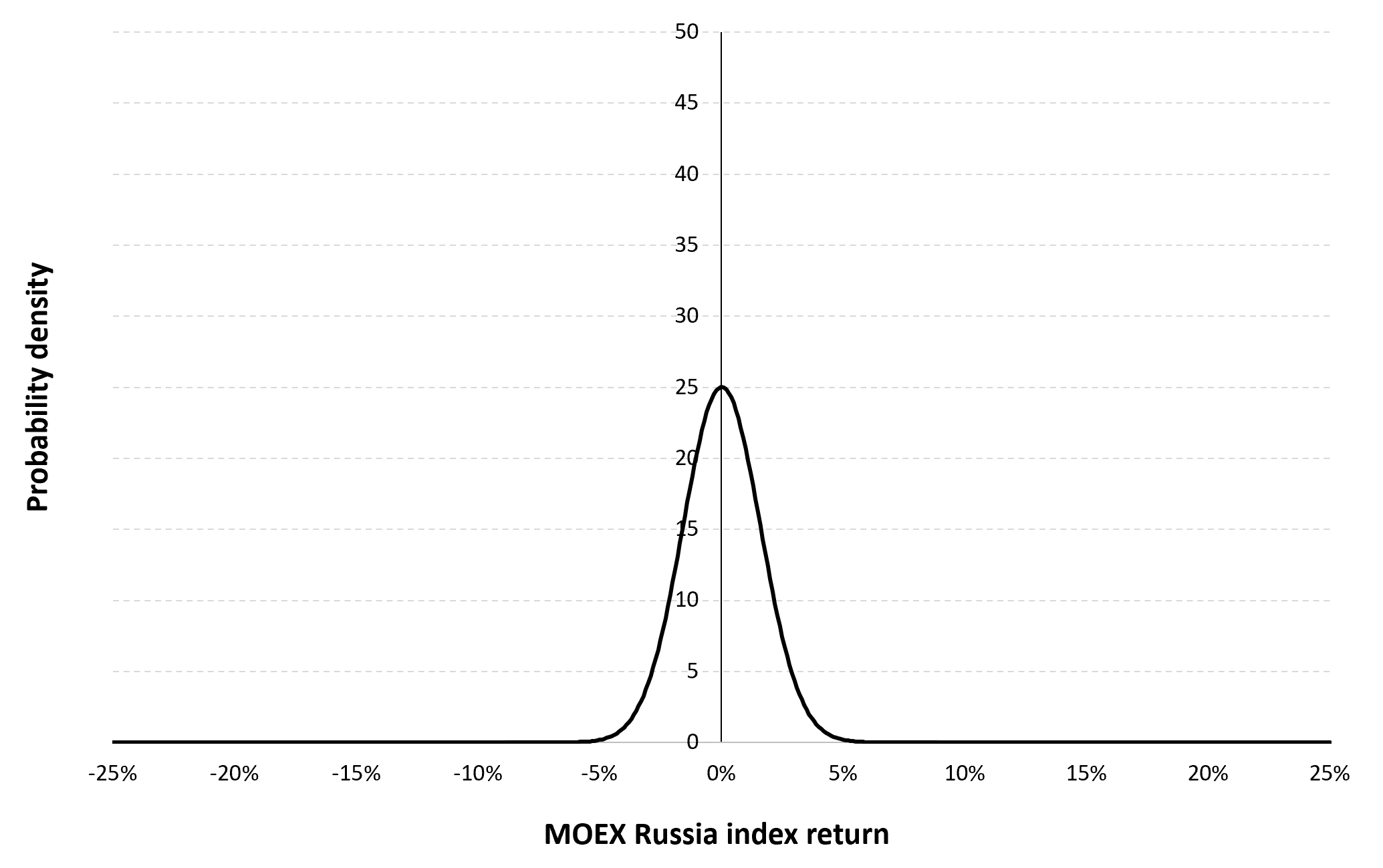
Source: computation by the author (data: Yahoo! Finance website).
Risk measures of the MOEX Russia index returns
The R program that you can download above also allows you to compute risk measures about the returns of the MOEX Russia index.
Table 5 below presents the following risk measures estimated for the MOEX Russia index:
- The long-term volatility (the unconditional standard deviation estimated over the entire period)
- The short-term volatility (the standard deviation estimated over the last three months)
- The Value at Risk (VaR) for the left tail (the 5% quantile of the historical distribution)
- The Value at Risk (VaR) for the right tail (the 95% quantile of the historical distribution)
- The Expected Shortfall (ES) for the left tail (the average loss over the 5% quantile of the historical distribution)
- The Expected Shortfall (ES) for the right tail (the average loss over the 95% quantile of the historical distribution)
- The Stress Value (SV) for the left tail (the 1% quantile of the tail distribution estimated with a Generalized Pareto distribution)
- The Stress Value (SV) for the right tail (the 99% quantile of the tail distribution estimated with a Generalized Pareto distribution)
Table 5. Risk measures for the MOEX Russia index.
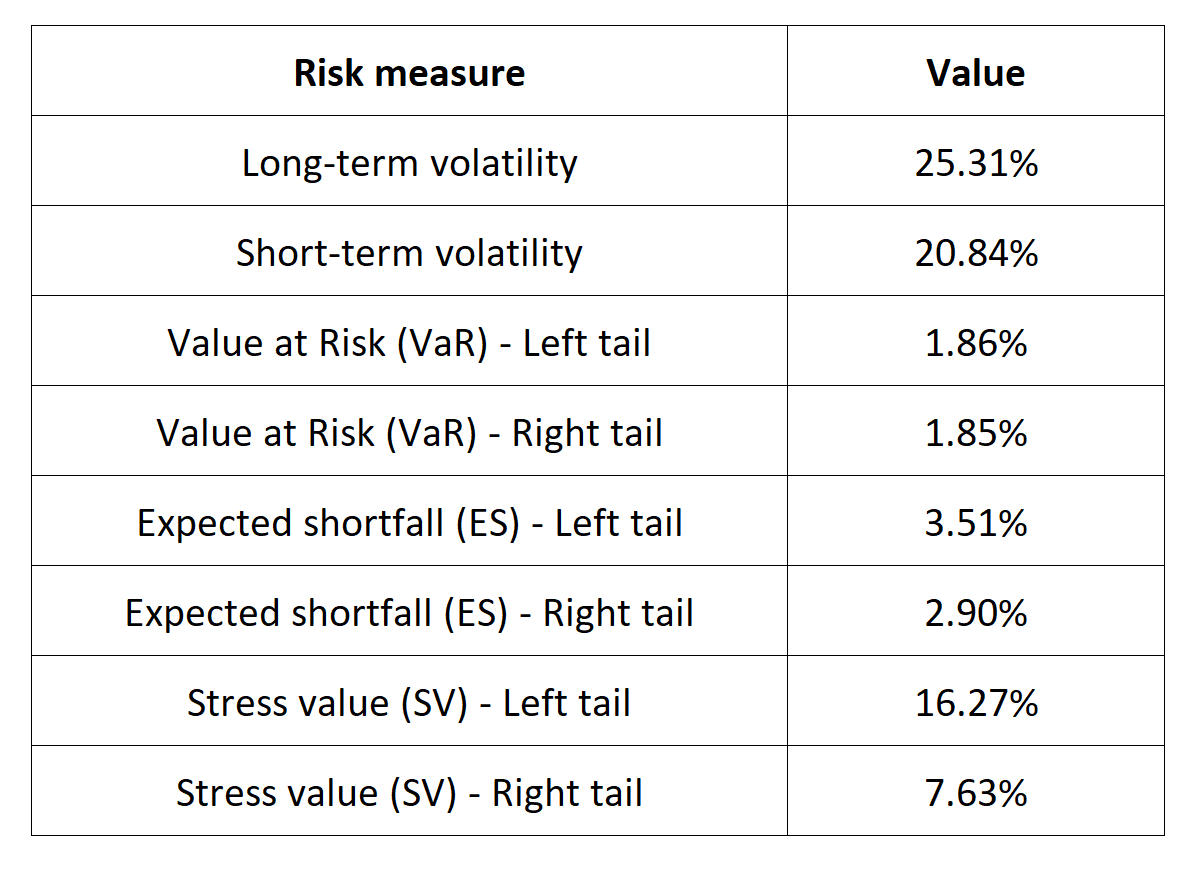
Source: computation by the author (data: Yahoo! Finance website).
The volatility is a global measure of risk as it considers all the returns. The Value at Risk (VaR), Expected Shortfall (ES) and Stress Value (SV) are local measures of risk as they focus on the tails of the distribution. The study of the left tail is relevant for an investor holding a long position in the MOEX Russia index while the study of the right tail is relevant for an investor holding a short position in the MOEX Russia index.
Why should I be interested in this post?
For a number of reasons, management students (as future managers and individual investors) should learn about the MOEX Russia index. The index includes wide range of industries, including energy, finance, telecommunications, and consumer goods, and it covers the biggest and most liquid companies listed on the Moscow Exchange. Understanding how the index is constructed, how it performs, and the companies that make up the index is important for anyone studying finance or business in Russia or interested in investing in Russian equities.
Individual investors can assess the performance of their own investments in the Russian equity market with the MOEX Russia index. Last but not least, a lot of asset management firms base their mutual funds and exchange-traded funds (ETFs) on the MOEX Russia index which can considered as interesting assets to diversify a portfolio. Learning about these products and their portfolio and risk management applications can be valuable for management students.
Related posts on the SimTrade blog
About financial indexes
▶ Nithisha CHALLA Financial indexes
▶ Nithisha CHALLA Calculation of financial indexes
▶ Nithisha CHALLA The business of financial indexes
▶ Nithisha CHALLA Float
Other financial indexes
▶ Nithisha CHALLA The S&P 500 index
▶ Nithisha CHALLA The FTSE 100 index
▶ Nithisha CHALLA The Nikkei 225 index
▶ Nithisha CHALLA The CSI 300 index
About portfolio management
▶ Youssef LOURAOUI Portfolio
▶ Jayati WALIA Returns
About statistics
▶ Shengyu ZHENG Moments de la distribution
▶ Shengyu ZHENG Mesures de risques
Useful resources
Academic research about risk
Longin F. (2000) From VaR to stress testing: the extreme value approach Journal of Banking and Finance, N°24, pp 1097-1130.
Longin F. (2016) Extreme events in finance: a handbook of extreme value theory and its applications Wiley Editions.
Business
wikipedia What is the MOEX Russia index?
Data
Yahoo! Finance MOEX Russia index
About the author
The article was written in May 2023 by Nithisha CHALLA (ESSEC Business School, Grande Ecole Program – Master in Management, 2021-2023).


